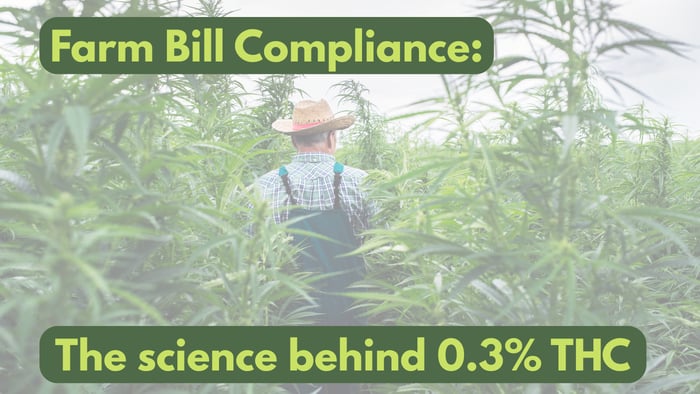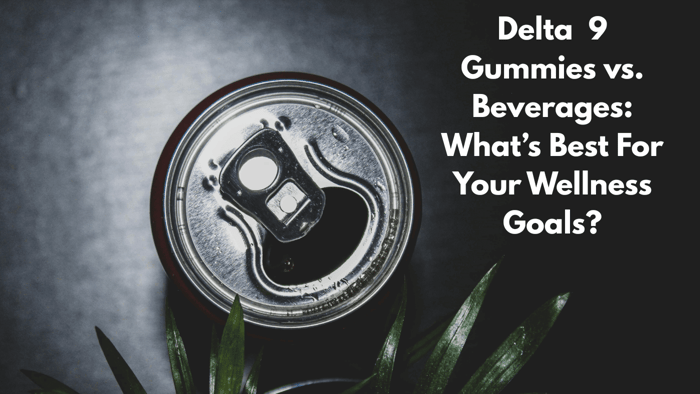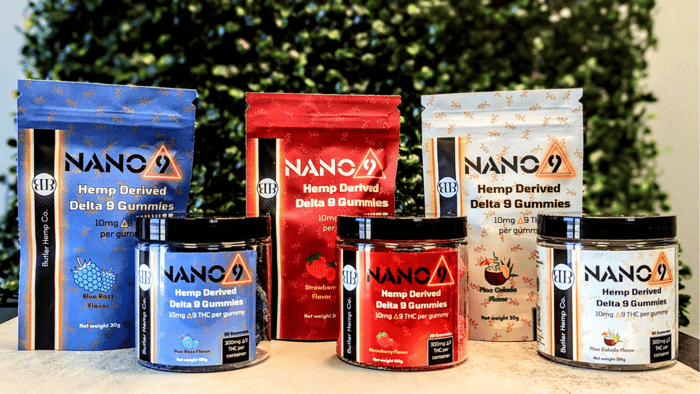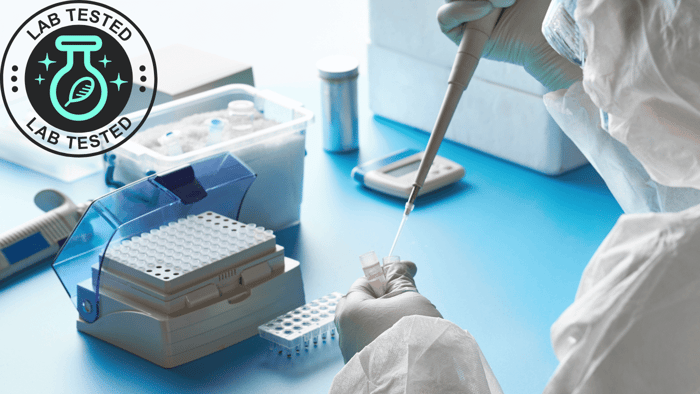Table of Contents
-
- The 2018 Farm Bill: A Regulatory Milestone
- Decoding the 0.3% Dry-Weight Standard
- How Product Mass Affects Formulation
- Maintaining Compliance Through Testing and Transparency
- State-Level Regulatory Variations
- The Historical Context of 0.3%
- Real-World Compliance: The Numbers
- Why Farm Bill Compliance Matters for Consumers
- The Future of Hemp Regulation
- Conclusion
- FAQs
When the 2018 Farm Bill passed, it fundamentally transformed the hemp industry in the United States. This landmark legislation didn't simply legalize hemp, it established an entirely new framework for cannabis-derived products that could be manufactured and sold across state lines, provided they met one critical requirement: maintaining a delta-9 THC concentration of no more than 0.3% on a dry-weight basis.
This seemingly straightforward percentage has become the cornerstone of hemp-derived product regulation, yet it remains one of the most misunderstood aspects of the industry. Understanding what "Farm Bill legal" actually means—and how product formulation affects compliance—is essential for both consumers and businesses navigating this evolving market.
The 2018 Farm Bill: A Regulatory Milestone
Prior to 2018, federal law made no distinction between hemp and marijuana. Both were classified as Schedule I controlled substances under the Controlled Substances Act. The Farm Bill changed this classification by legally defining hemp as:
"The plant Cannabis sativa L. and any part of that plant, including the seeds, derivatives, extracts, cannabinoids, isomers, acids, salts, and salts of isomers, whether growing or not, with a delta-9 tetrahydrocannabinol concentration of not more than 0.3 percent on a dry-weight basis."
This definition created a clear regulatory pathway for hemp-derived cannabinoids--including CBD, CBG, and even delta-9 THC--to be used in consumer products, provided the total THC concentration remained below the 0.3% threshold.
The legislation didn't create a THC-free industry. Rather, it established parameters for a low-THC market with significant room for innovation.
Decoding the 0.3% Dry-Weight Standard
The 0.3% limit is frequently misunderstood. This percentage doesn't refer to the absolute amount of THC in a product—it refers to the ratio of THC weight to total product weight.
Consider a standard 5-gram gummy. At 0.3% of total weight, this product could legally contain up to 15 milligrams of delta-9 THC (0.3% × 5,000 mg = 15 mg) while maintaining Farm Bill compliance, assuming all cannabinoids are hemp-derived.
Now scale that calculation to a 16-ounce beverage, which weighs approximately 454 grams. Using the same 0.3% calculation, the theoretical maximum would be 1,362 milligrams of THC—though responsible manufacturers keep actual dosages far below this ceiling for consumer safety and appropriate effects.
This mathematical relationship explains why hemp-derived beverages can legally contain higher milligram totals than solid edibles while remaining fully compliant. The percentage remains constant, but the total product mass provides different parameters for formulation.
How Product Mass Affects Formulation
The 0.3% standard creates different formulation opportunities depending on product format. A larger product mass naturally allows for higher absolute THC content while maintaining the same compliant concentration.
For example:
A 2-ounce shooter (approximately 56 grams) could theoretically contain up to 168 mg THC, though most responsible brands formulate between 10-20 mg for appropriate dosing.
A 16-ounce beverage (approximately 454 grams) has significantly more headroom under the 0.3% threshold, though market standards typically range from 10-50 mg per serving.
A 5-gram gummy reaches its compliance limit at approximately 15 mg THC.
This isn't a loophole—it's simply how the mathematics of percentage-based regulations function. Responsible brands use this understanding to create effective products while maintaining substantial margins of safety below the legal threshold.
Maintaining Compliance Through Testing and Transparency
Achieving and maintaining Farm Bill compliance requires rigorous quality control processes. Legitimate manufacturers utilize certified third-party laboratories to test both raw materials and finished products. These independent tests, documented in Certificates of Analysis (COAs), verify that delta-9 THC percentages remain below the 0.3% threshold.
Compliance protocols include:
Formulation precision: Converting milligram dosages to percentages based on total product weight to ensure regulatory compliance.
Comprehensive testing: Analyzing finished, packaged products rather than just raw extracts to account for all variables in the final formulation.
Hemp source verification: Ensuring all THC is derived from compliant hemp plants (≤ 0.3% THC) rather than marijuana sources.
Total cannabinoid calculation: Accounting for delta-9 THC, delta-8 THC, and THCA (which converts to delta-9 when heated) to ensure total THC equivalents remain compliant.
Label accuracy: Providing clear, accurate information about THC content and verification of Farm Bill compliance.
This multifaceted approach combines chemistry, regulatory knowledge, and quality assurance to ensure every product meets federal standards.
State-Level Regulatory Variations
While the Farm Bill established federal legality for compliant hemp products, individual states retain the authority to impose additional restrictions. This has created a complex regulatory landscape that varies significantly by jurisdiction.
Some states have adopted regulations that mirror federal standards, permitting hemp-derived delta-9 THC products that meet the 0.3% threshold. Others have enacted more restrictive policies that limit or prohibit intoxicating hemp derivatives regardless of their Farm Bill compliance.
Kansas, for instance, maintains clear standards: products derived from compliant hemp (≤ 0.3% THC on a dry-weight basis) are permissible when they meet established testing, labeling, and distribution requirements. This regulatory clarity enables companies like Butler Hemp Co. and Nano 9 to operate confidently within state boundaries while maintaining comprehensive documentation and testing protocols.
The federal framework opened the door to hemp-derived products, but state legislatures determine the specific parameters of their local markets.
The Historical Context of 0.3%
The 0.3% threshold has an interesting origin story. This specific number traces back to 1970s research by Canadian scientist Ernest Small, who proposed it as an arbitrary dividing line for classifying "hemp" versus "marijuana" for botanical purposes. When U.S. lawmakers drafted the Farm Bill decades later, they adopted this figure without extensive debate about its scientific basis.
This single decimal point has since shaped a multi-billion-dollar industry, defined legal boundaries, and generated ongoing discussions among regulators, growers, and industry stakeholders. Many argue that the threshold is overly restrictive and fails to account for natural variations in cannabis genetics and growing conditions.
Until Congress revisits the Farm Bill—renewals occur every five years and involve considerable debate—the 0.3% standard remains federal law.
Real-World Compliance: The Numbers
Let's examine actual compliance calculations:
Example A: 10 mg Nano 9 Seltzer (16 oz / 454 g)
- 10 mg THC = 0.010 g THC
- 0.010 g ÷ 454 g = 0.0022% THC
- This is more than 100 times below the legal limit
Example B: 50 mg Hemp-Derived Beverage (16 oz)
- 50 mg = 0.050 g THC
- 0.050 ÷ 454 = 0.011% THC
- Still well within compliance parameters
Example C: 10 mg THC Gummy (5 g)
- 0.010 ÷ 5 = 0.2% THC
- Closer to the threshold but fully compliant
These calculations demonstrate how larger beverages can contain higher absolute THC amounts while maintaining significantly lower percentages than the regulatory ceiling allows.
Why Farm Bill Compliance Matters for Consumers
Understanding Farm Bill regulations provides important context for making informed purchasing decisions. When a product is Farm Bill compliant, it means:
The product is legal to manufacture, distribute, and possess at the federal level (subject to state regulations).
The manufacturer has implemented testing protocols to verify compliance rather than relying on estimates or untested formulations.
Third-party verification provides assurance about product contents and regulatory status.
The brand prioritizes transparency, scientific rigor, and regulatory compliance over shortcuts.
Farm Bill compliance represents more than a marketing claim—it's a commitment to legal operation, product quality, and consumer transparency.
The Future of Hemp Regulation
The Farm Bill undergoes renewal every five years, and the next iteration is already generating significant discussion among lawmakers, industry stakeholders, and advocacy groups. Key debates include:
- Whether to adjust the 0.3% THC threshold upward or downward
- How to regulate intoxicating hemp-derived cannabinoids more specifically
- Whether to modify the dry-weight calculation methodology
- How to balance hemp industry growth with public health considerations
Some proposals advocate for increasing the threshold to 1% to reduce compliance challenges for farmers and account for natural variations in plant genetics. Others suggest implementing stricter controls on intoxicating hemp derivatives or closing what some perceive as formulation loopholes.
Regardless of regulatory changes, companies that have established robust testing, documentation, and transparency practices will be better positioned to adapt to evolving requirements than those operating with minimal oversight.
Conclusion
The phrase "Farm Bill legal" represents more than a simple absence of THC—it describes products that are scientifically formulated, rigorously tested, and fully transparent in their composition and regulatory status.
The 0.3% standard defines the boundary between federally legal hemp and marijuana, while simultaneously creating opportunities for innovation by manufacturers who understand the underlying mathematics and chemistry. Whether you're enjoying a hemp-derived beverage or using a CBD tincture, the Farm Bill framework makes these products possible, while the dedication of responsible manufacturers ensures they remain compliant, safe, and accurately labeled.
As the hemp industry continues to mature and regulations evolve, understanding these fundamental principles helps consumers make informed choices and supports the growth of a transparent, science-driven market.
Key Takeaway: In hemp-derived products, size matters for compliance. A 16-ounce beverage offers significantly more formulation flexibility than a small edible while maintaining the same 0.3% standard. This mathematical relationship—not a regulatory loophole—allows larger products to contain higher absolute THC amounts while remaining well within legal parameters.
FAQs
Why can a 16 oz hemp beverage legally contain more THC than a gummy?
The 0.3% THC limit is based on the ratio of THC weight to total product weight, not the absolute amount of THC. A 16-ounce beverage weighs approximately 454 grams, while a typical gummy weighs only 5 grams. Using the same 0.3% calculation, the beverage has significantly more total mass, which allows for higher milligram amounts while maintaining the same compliant percentage. For example, a 10 mg THC gummy at 5 grams equals 0.2% THC, while a 50 mg THC beverage at 454 grams equals only 0.011% THC—still well below the legal threshold.
What does "Farm Bill legal" actually mean?
"Farm Bill legal" means a product is derived from compliant hemp (cannabis with ≤ 0.3% THC on a dry-weight basis) and meets federal standards established by the 2018 Farm Bill. This isn't the same as THC-free—it means the product has been scientifically formulated, rigorously tested by third-party labs, and verified to remain below the 0.3% threshold. Farm Bill compliance ensures the product is legal to manufacture and possess at the federal level, though individual states may impose additional restrictions.
How do hemp companies ensure their products stay within the 0.3% limit?
Legitimate manufacturers use certified third-party laboratories to test both raw hemp extracts and finished products. These independent tests produce Certificates of Analysis (COAs) that verify the exact THC percentage. Companies must carefully calculate the ratio of THC milligrams to total product weight, ensure all cannabinoids are hemp-derived, account for various THC forms (delta-9, delta-8, and THCA), and test the final packaged product—not just the raw ingredients. This combination of precise formulation math, comprehensive testing, and transparent labeling ensures consistent compliance.
Are Farm Bill legal hemp products legal in all 50 states?
Not necessarily. While the 2018 Farm Bill established federal legality for compliant hemp products, individual states retain the authority to impose their own restrictions. Some states have adopted regulations that mirror federal standards and permit hemp-derived delta-9 THC products meeting the 0.3% threshold. However, other states have enacted more restrictive policies that limit or prohibit intoxicating hemp derivatives regardless of Farm Bill compliance. It's important to verify your state's specific regulations before purchasing or possessing hemp-derived THC products, as the regulatory landscape varies significantly by jurisdiction.




